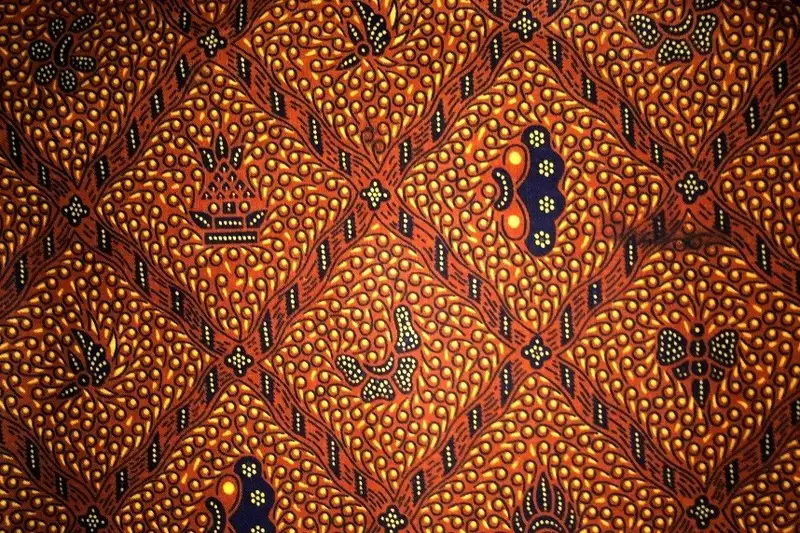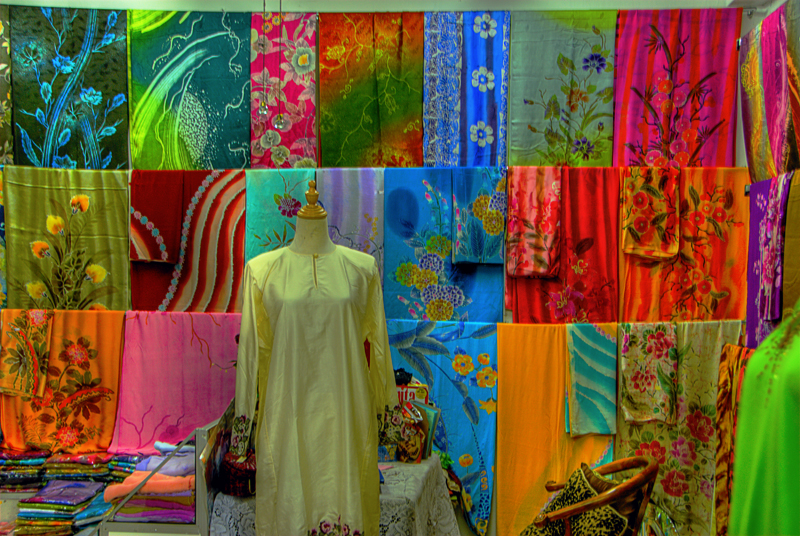A shared heritage of wax and dye, yet a world of difference in a single cloth. This is the story of batik, a celebrated art form that weaves through the cultural fabric of Indonesia and Malaysia, each nation infusing it with its own unique identity.
From the intricate, philosophical patterns of Java to the vibrant, floral expressions of the Malaysian Peninsula, batik tells a tale of two countries, their distinct histories, and their artistic souls. While both are rooted in the ancient wax-resist dyeing technique, the final masterpieces that emerge are as different as the lands that birth them.
The Origins and Etymology: A Javanese Heartbeat
The word "batik" itself is a whisper from the past, its origins firmly planted in the rich soil of Java, Indonesia. It is widely believed to be derived from the Javanese words "amba," meaning "to write," and "titik," meaning "dot" or "point." This etymology beautifully captures the essence of traditional batik making – the art of drawing or writing with wax. Another interpretation suggests it comes from the Javanese word "tritik," a pattern of small, fine dots.
Historical evidence suggests that while wax-resist dyeing techniques existed in various forms across Asia and the Middle East for over a millennium, it was in the royal courts of Java that batik reached its zenith of refinement and cultural significance. Here, it was more than just a decorated cloth; it was a powerful symbol of status, lineage, and cultural identity.
The Diverging Threads: Indonesian vs. Malaysian Batik
While Malaysian batik owes a historical debt to its Javanese predecessor, it has evolved into a distinct art form with its own voice and aesthetic. The differences between the two are a fascinating study in cultural adaptation and artistic expression.
Design Philosophy and Motifs:
Indonesian batik is renowned for its deeply symbolic and intricate motifs. Rooted in a rich tapestry of Hindu-Javanese and Islamic traditions, the patterns often carry profound philosophical meanings. Central Javanese batik from Yogyakarta and Surakarta, for instance, features classic patterns like Parang (symbolizing power and strength, once reserved for royalty), Kawung (a geometric representation of the areca palm fruit, signifying fertility), and Truntum (a star-like pattern symbolizing blossoming love). These designs are often dense, detailed, and tell stories of mythology, spirituality, and the cycle of life. Due to Islamic influence, human and animal figures are often stylized or abstracted.
Malaysian batik, on the other hand, embraces a more naturalistic and vibrant aesthetic. The motifs are typically larger, simpler, and celebrate the lush flora and fauna of the Malaysian landscape. Flowers like the hibiscus (Malaysia's national flower), orchids, and birds are common subjects. The patterns are less dense, with more open space, giving the designs a lighter and more airy feel. Human and animal figures are generally avoided due to Islamic proscriptions, leading to a focus on the beauty of the natural world.
Color Palette:
The color palettes of the two batiks are a stark and immediate point of differentiation. Indonesian batik, particularly from the traditional centers in Central Java, is characterized by its earthy and somber tones. Sogan, a deep brown dye derived from the Peltophorum pterocarpum tree, is a hallmark of this style, often combined with indigo blue and black.

This creates a classic, sophisticated look that is deeply ingrained in Javanese cultural identity. Coastal Indonesian batik from areas like Pekalongan is more colorful due to historical trade and cultural exchange, but the Central Javanese style remains iconic.
Malaysian batik revels in a riot of bright and cheerful colors. Think fuchsia pinks, electric blues, vibrant greens, and sunny yellows. This preference for vivid hues reflects a more modern and commercially-oriented approach to batik production, aiming for a fresh and eye-catching appeal.
Production Techniques:
The methods of applying the wax and color also diverge, contributing to the distinct looks of the two textiles.
In Indonesia, the two primary methods are Batik Tulis (hand-drawn batik) and Batik Cap (stamped batik). Batik Tulis is the most traditional and labor-intensive method, where the artisan uses a pen-like tool called a canting to meticulously draw the intricate patterns with hot wax.This process can take weeks or even months to complete, resulting in a unique and highly-prized piece of art. Batik Cap involves using a copper stamp to apply the wax, allowing for faster production of repeating patterns.

While Malaysia also employs the block-printing method, its hand-drawn batik often utilizes a more free-flowing technique. Artisans frequently use a larger canting or even brushes to apply the wax, resulting in bolder lines and a more painterly effect.This technique is often referred to as "batik lukis" (painted batik).
Furthermore, the coloring process in Malaysia often involves brush painting the dyes onto the fabric, allowing for a more controlled application of multiple colors within a single design, as opposed to the repeated dyeing process common in Indonesia.
Cultural Significance: A Shared Pride
Despite their differences, batik holds a place of immense cultural pride in both nations.
In Indonesia, batik is a cornerstone of national identity. It is worn at every stage of life, from birth ceremonies to weddings and funerals. On October 2, 2009, UNESCO recognized Indonesian batik as a Masterpiece of the Oral and Intangible Heritage of Humanity, a testament to its deep cultural roots and the craftsmanship involved. The Indonesian government has also designated October 2nd as National Batik Day, encouraging citizens to wear batik to celebrate their heritage.
In Malaysia, batik is also a cherished national symbol. It is the official attire for formal occasions and is proudly worn by government officials and citizens alike. The Malaysian government has actively promoted the batik industry, encouraging innovation while preserving its traditional essence.
A Living, Breathing Art Form
In conclusion, while the river of batik flows from a common Javanese spring, it has branched into two distinct and beautiful streams in Indonesia and Malaysia. Indonesian batik, with its intricate symbolism and earthy tones, speaks of a deep philosophical heritage. Malaysian batik, with its vibrant colors and bold floral motifs, sings a song of natural beauty and modern vibrancy.
Both are a testament to the artistic ingenuity of the region, a living, breathing art form that continues to evolve while staying true to its ancient soul. To appreciate the difference is to celebrate the rich and diverse cultural tapestry of Southeast Asia.
References
Arney, S. (1987). Malaysian batik: Creating new traditions. The Kraftangan Malaysia.
Doellah, H. S. (2002). Batik: The impact of time and environment (trans. by Bruce W. Carpenter). G.K.B.I. Medari.
Elliott, I. M. (2014). Batik: Fabled cloth of Java. Tuttle Publishing.
Fraser-Lu, S. (1986). Indonesian batik: Processes, patterns, and places. Oxford University Press.
Hasanah, N. K., Nabila, D., Nina, N., Paska, M. Y., Wulandari, N., & Barella, Y. (2025). Malaysia's claim to Indonesian batik: Background and conflict resolution. SOSIAL : Jurnal Ilmiah Pendidikan IPS, 3(1), 95–106. https://doi.org/10.62383/sosial.v3i1.650
IWareBatik. (n.d.). The history of batik. Retrieved June 7, 2024, from https://www.iwarebatik.org/the-history-of-batik/
Kartiwa, S. (2007). Batik Indonesia: Dari masa ke masa. Gramedia Pustaka Utama.
Nordin, R., & Abu Bakar, S. S. (2012). Malaysian batik industry: Protecting local batik design by copyright and industrial design laws. International Journal of Business and Society, 13(2), 117-132.
Priyanto, S., Sheikh Akbari, A., & Asmara, R. A. (2024). Classification of Malaysian and Indonesian batik designs using deep learning models. [Unpublished manuscript]. School of Built Environment, Engineering and Computing, Leeds Beckett University. https://eprints.leedsbeckett.ac.uk/id/eprint/11633/
UNESCO. (2009). Indonesian batik. Intangible Cultural Heritage. Retrieved June 7, 2024, from https://ich.unesco.org/en/RL/indonesian-batik-00170
Veldhuisen, H. C. (1993). Batik belanda 1840-1940: Dutch influence in batik from Java, history and stories. Gaya Favorit Press.
Wahed, W. J. E., Amin, H., Bohari, A. A. M., Pindah, C., & Azmi, S. (2022). Malaysian batik, our pride: A systematic literature review. International Journal of Academic Research in Business and Social Sciences, 12(10), 942–955. https://doi.org/10.6007/IJARBSS/v12-i10/14950



















